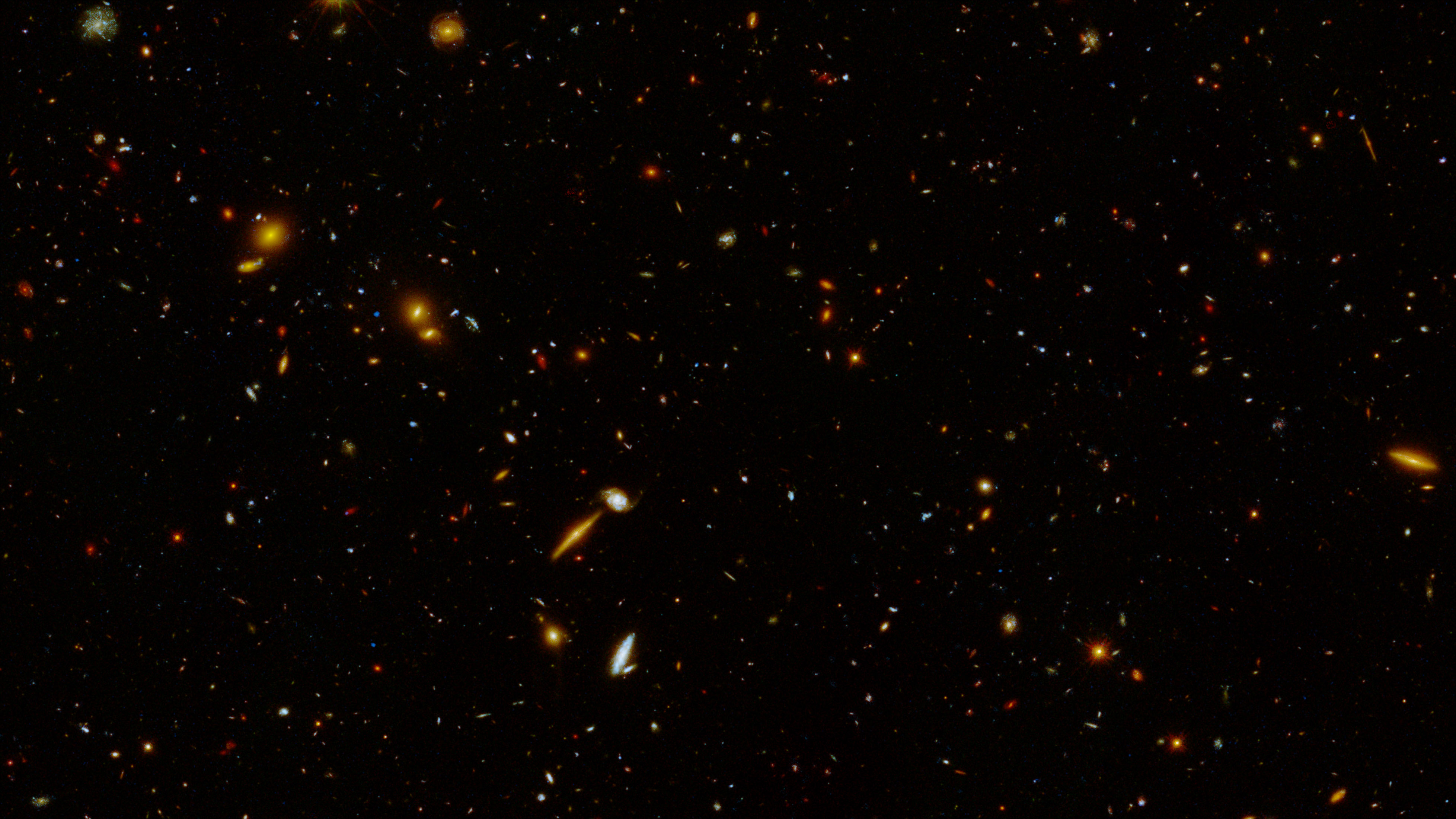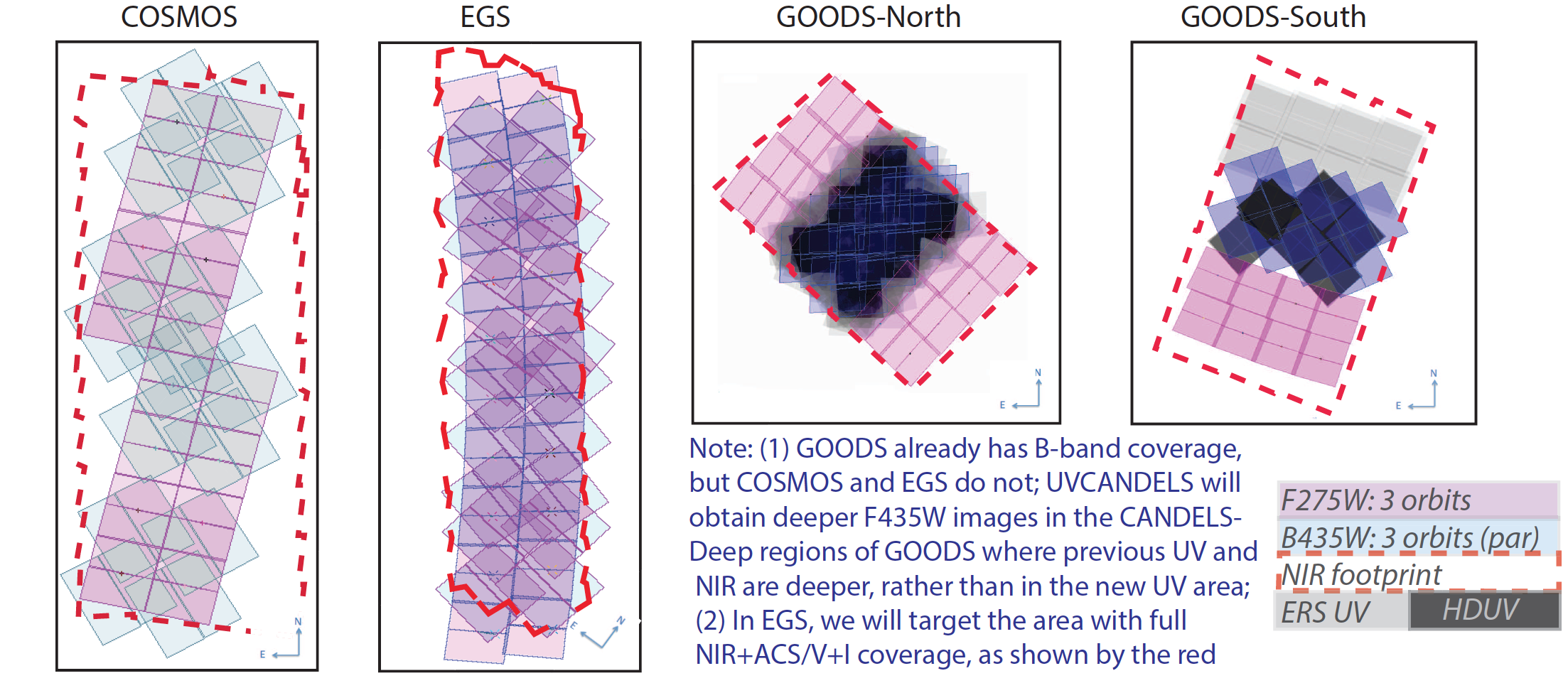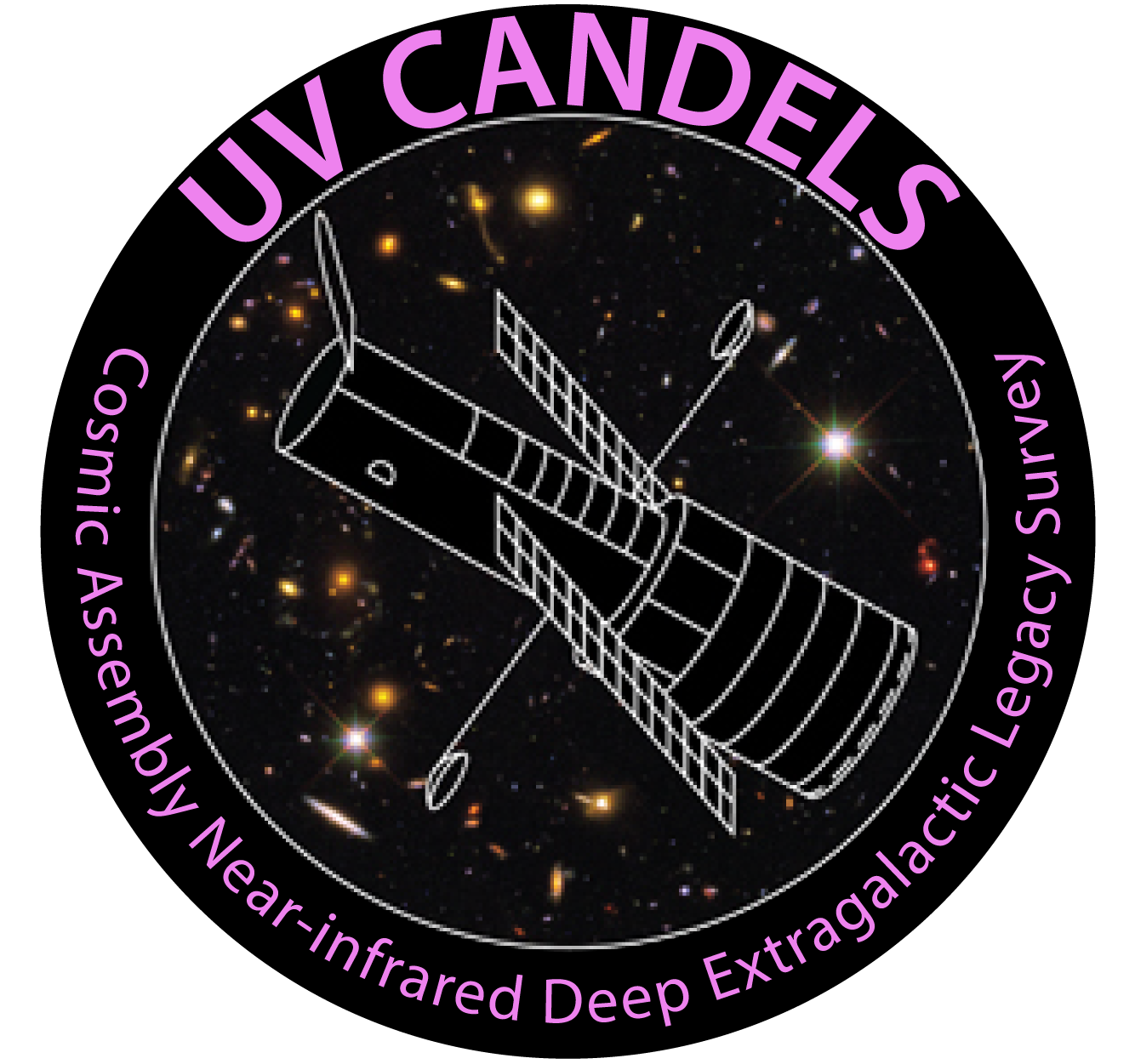Mission Overview
Ultraviolet Imaging of the Cosmic Assembly Near-infrared Deep Extragalactic Legacy Survey Fields (UVCANDELS)
Primary Investigator: Harry Teplitz
Full Team: See full team list.
HLSP Authors:
Xin Wang, Laura Prichard, Anahita Alavi, Marc Rafelski, Norman Grogin, Anton Koekemoer, Ben Sunnquist, Vihang Mehta, Harry Teplitz
Released: 2022-06-13
Updated: 2024-07-15
Primary Reference(s): Wang et al. 2024
DOI: 10.17909/8s31-f778
Citations: See ADS Statistics
Source Data:
- HST GO 15647
Slideshow
Overview
UVCANDELS offers wide-area extragalactic UV imaging of four of the premier HST deep-wide survey fields defined by CANDELS. The program is motivated by an investigation of galaxy evolution during the epoch of vigorous star formation at 0.5 < z < 3 by:
- Using the high spatial resolution UV and Blue data (700 pc at z~1) to study the structural evolution of galaxies and create 2D maps of their star-formation history.
- Combining UVCANDELS with Herschel legacy data to trace the evolution of the dust content of moderate redshift (z < 1) galaxies.
- Probing the role of environment in the evolution of low-mass star-forming galaxies.
- Investigating the decay of star-formation in massive early-type galaxies and the role of minor mergers.
- Constraining the escape fraction of ionizing radiation from galaxies at z ~ 2.5 to better understand how star-forming galaxies reionized the Universe at z > 6.
UVCANDELS consists of WFC3/F275W imaging of four CANDELS fields (~430 sq. arcmin combined), reaching AB=27 for compact galaxies (SFR~0.2 Msun/yr at z=1), together with parallel ACS/F435W (AB>=28.0) imaging. For each field (GOODS-N, GOODS-S, COSMOS and EGS), we deliver image mosaics of the new F275W observations. The mosaics are made on both 60mas and 30mas pixel grids. The astrometry is aligned to the CANDELS optical 30mas mosaics (F814W for COSMOS and F606W for the rest), with a small relative offset (usually <0.15 pixel [<45 mas]). The team also delivers new ACS/F435W images for the COSMOS and EGS Fields over the same area. The F275W area of the GOODS fields falls within the original GOODS F435W coverage.
Photometric catalogs for the F275W and F435W imaging from UVCANDELS are provided separately for the individual fields. These catalogs were generated using SExtractor and list the photometry from two different techniques:
1.) CANDELS method [relevant columns labelled with "_OLD"]: hot+cold photometry measured using the isophotes defined on the F160W (H-band) image similar to how rest of the CANDELS photometry is performed (included for completeness and consistency with previous CANDELS catalogs); and
2.) IMPROVED method: new technique that uses isophotes defined on the F606W (V-band) image, which are better matched for the UV morphology of galaxies and then reconciled with the H-band isophotes to ensure photometry stays consistent with the rest of CANDELS (see Sun, L., et al. 2024 for more details).
The team highly recommends using the IMPROVED method photometry for both F275W and F435W.
Data Products
The image files have the following naming convention:
hlsp_uvcandels_hst_<ins>_<field>-<scale>_<filter>_v1.0_<type>.fits
where:
- <ins> = Instrument used, one of "acs-wfc" or "wfc3-uvis".
- <field> = Name of the field, one of "cosmos", "egs", "goodsn", or "goodss".
- <scale> = Pixel grid for this image, in milliarcseconds, one of "30mas" or "60mas".
- <filter> = Filter used, one of "f275w" or "f435w".
- <type> = Type of image product, one of "sci", "wht", or "rms".
The photometric catalog files have the following naming convention:
hlsp_uvcandels_hst_<ins>_<field>_<filter>_v1.0_cat.fits
where:
- <ins> = Instrument used, one of "acs-wfc" or "wfc3-uvis".
- <field> = Name of the field, one of "cosmos", "egs", "goodsn", or "goodss".
- <filter> = Filter used, one of "f275w" or "f435w".
Data file types:
| _sci.fits | Science image. |
| _wht.fits | Weight image, the inverse variance map created by AstroDrizzle. |
| _rms.fits |
Noise map, after correcting for the correlated noise following Casertano et al. (2000). |
| _cat.fits | Photometric catalog. |
Data Access
You can download the mosaic FITS files using the links in the table below.
| Field | Pixel Grid | F275W | F435W |
|---|---|---|---|
| COSMOS | 30mas | RMS SCI WHT | RMS SCI WHT |
| 60mas | RMS SCI WHT | RMS SCI WHT | |
| EGS | 30mas | RMS SCI WHT | RMS SCI WHT |
| 60mas | RMS SCI WHT | RMS SCI WHT | |
| GOODS-N | 30mas | RMS SCI WHT | |
| 60mas | RMS SCI WHT | ||
| GOODS-S | 30mas | RMS SCI WHT | |
| 60mas | RMS SCI WHT |
You can download the photometric catalog files using the links in the table below.
| F275W Catalogs | F435W Catalogs |
|---|---|
| COSMOS | COSMOS |
| EGS | EGS |
| GOODS-N | |
| GOODS-S |



